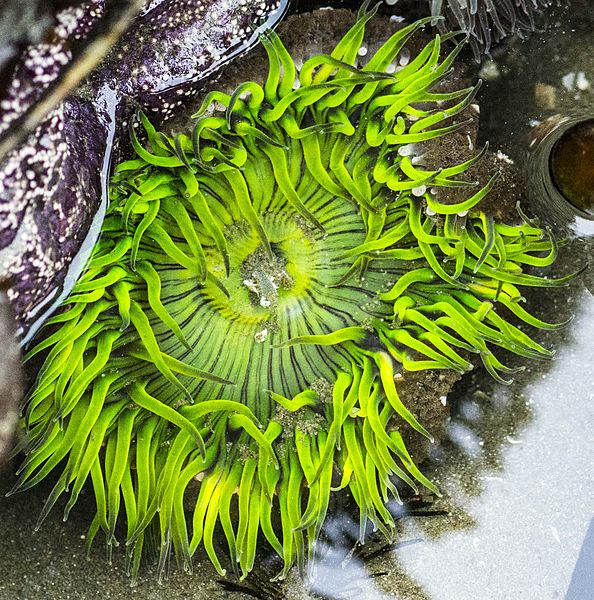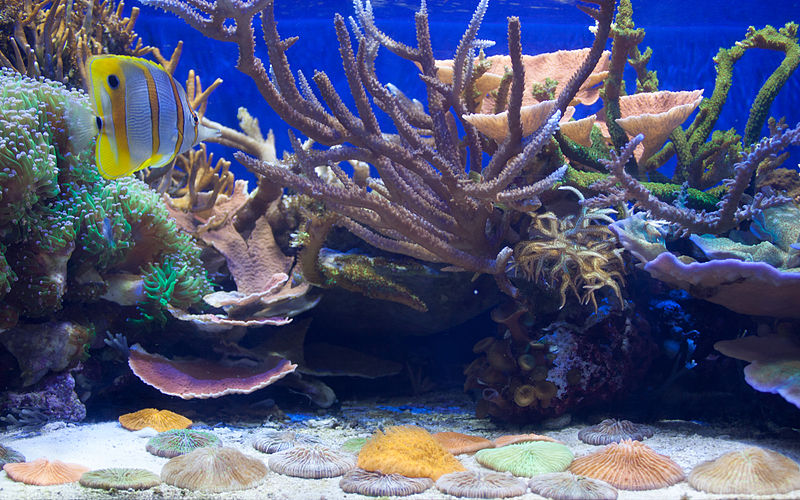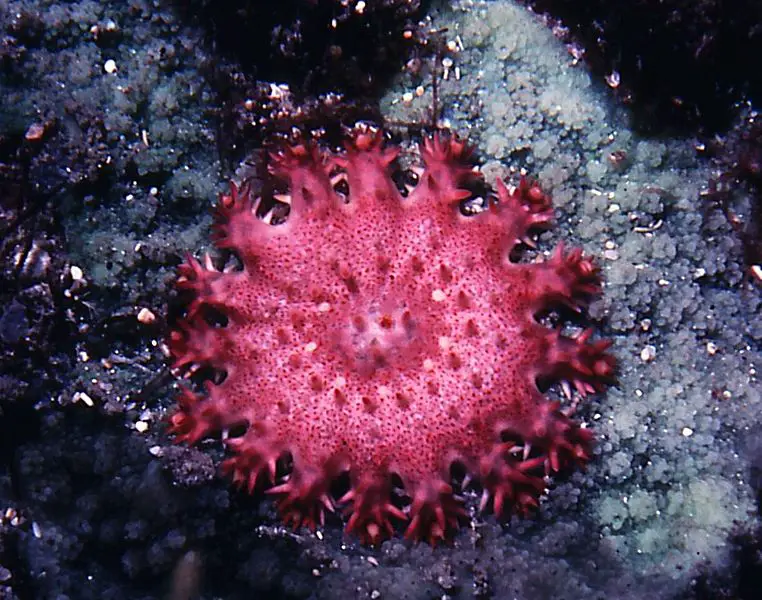Some anemones host photosynthetic zooxanthellae in their tentacles that may be expelled if light levels are inadequate. If zooxanthellae cannot photosynthesize, they are useless to anemones, so they expel them in order to conserve energy.
In this article we will answer all your burning questions about your aquarium anemone and its relationship to zooxanthellae. You will learn how your anemone disposes of waste, if anemones eat zooxanthellae, what a dying bubble tip anemone looks like, if anemones sting coral, why your bubble tip anemone’s mouth might be open, and what causes anemone bleaching.
How Does the Anemone Dispose of Waste?
Unlike most animals who have a linear excretory system that starts when food enters the mouth and waste exits the anus, anemones only have one opening in their excretory system. An anemone’s mouth also acts as its anus. Food goes into the mouth, is processed by the rudimentary digestive system, and then waste exits the same way it came in.
Although the bulk of the waste excretion occurs at the mouth, anemones can also get rid of chemical waste by diffusion through their body and tentacle tissues. Excess ions can be excreted back into the seawater in order to keep the body in balance. Large waste particles exit the mouth and are spit back into the water.
Do Sea Anemones Eat Zooxanthellae?
Anemones do not eat zooxanthellae, rather they are a host for the tiny photosynthetic plankton. Zooxanthellae live in the tentacles of anemones and absorb sunlight and carbon dioxide needed to fuel photosynthesis. The anemones benefit from the nutrients and products of photosynthesis that the zooxanthellae provide.
The relationship between anemone and zooxanthellae is not one of predator and prey. Rather, it is a symbiotic relationship in which the anemone provides protection and housing for the zooxanthellae and the zooxanthellae provide nutrients for the anemone. Anemones will consume other prey items such as zooplankton and other organic matter to fulfill its full nutritional needs.
Even when anemones expel zooxanthellae, they do not try to eat them because the small particles do not provide enough nutrients as a food item to be worth capturing and consuming.
What Does a Dying Bubble Tip Anemone Look Like?
Bubble tip anemones are common inhabitants of saltwater aquarium tanks. However, you need to take good care of your bubble tip anemone because if it dies, it can affect the entire ecosystem of the tank.
The first clue that your bubble tip anemone may be dying is that it will shrink. Normally, bubble tip anemones are large and their tentacles take up space. A dying bubble tip anemone will be noticeably smaller. Another hint that your bubble tip anemone is on its way out is that it will release a sickly looking strand of mucus that is different from its normal waste.
The tentacles of your bubble tip anemone may begin to fall off and the mouth may remain open and unguarded. The water in your aquarium will most likely turn murky as the bubble tip anemone releases deteriorating chemicals into the water. Bubble tip anemones begin to decompose before they have even died.
The most obvious clue that your bubble tip anemone is dying is the smell. Your aquarium’s water will smell rancid. If you suspect your bubble tip anemone is dying, you need to take action to remove it or the other inhabitants from the tank before the toxins released by the dying anemone kill everything else.
Do Anemones Sting Small Polyp Scleractinian Corals?
Even anemones and corals are closely related and both are armed with stinging cells called cnidocytes, that doesn’t mean that they won’t sting each other. Some anemones are considered very aggressive and will sting any neighboring corals.
For small polyp scleractinian corals that may be some of the more delicate inhabitants of your tank, it may be best to house them away from any anemones. Anemones will sting and kill the coral if necessary to acquire territory or compete for food.
Be aware of the species you put together in a tank. Anemones are mobile and can actively encroach on a coral’s territory, whereas the coral is stationary and won’t have the advantage of being able to defend itself as effectively.
Why Is My Bubble Tip Anemone’s Mouth Open?
There are many different reasons why your bubble tip anemone’s mouth may be open. Since the mouth is the opening through which anemones will expel their waste, it could be preparing to get rid of the waste or expelling zooxanthellae if there aren’t enough light levels to support them.
However, if your bubble tip anemone’s mouth remains open for a long term, this could be an indication of something more sinister. The water chemistry or cleanliness may not be optimal for the anemone and an open mouth is a sign that the anemone is trying to expel any unwanted particles it absorbed through the water.
If the mouth remains open for too long, there is a good chance that your bubble tip anemone is going to die. Since the mouth is the most vulnerable part of an anemone’s body, it is normally protected by the tentacles and kept closed. However, a dying anemone will open its mouth because there is no life function left to protect.
What Causes Anemone Bleaching?
If your anemone becomes stressed due to elevated temperatures in the water or a lack of sufficient light needed for photosynthesis, it will expel its zooxanthellae. A bleached anemone is one that has no zooxanthellae and so has lost its vibrant color.
Zooxanthellae need sunlight to photosynthesize and the relationship between anemones and zooxanthellae operates under optimal conditions. If the environment in which the two live reaches beyond either of their tolerances, they will abandon their partnership in an attempt to reserve all extra energy for survival.
Conclusion
Anemones make great saltwater aquarium inhabitants, but their relationships with other organisms can be delicate. In order to help your anemone thrive, ensure that water chemistry and conditions are optimal for your anemone species.



